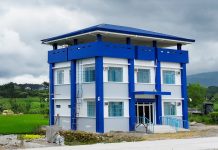TACLOBAN CITY – Red tide toxins remain on the seven bays of the region, raising shellfish ban in some coastal towns to prevent poisoning, the Bureau of Fisheries and Aquatic Resources (BFAR) reported.
For months now, the contamination thrives in Irong-Irong and Cambatutay Bays in Samar; Carigara Bay in Leyte; coastal waters of Leyte, Leyte; Matarinao Bay in Eastern Samar and coastal waters of Naval, Biliran.
Last week, the phenomenon expanded to Calubian, Leyte.
BFAR Regional Director Juan Albaladejo warned that all types of shellfish taken from affected bays are positive of red tide toxins.
Albaladejo said that the red tide toxins found in these seven bays are beyond the regulatory limit of 10 cells per liter in seawater and 49 saxitoxin per gram in shellfish meat.
In affected areas, the density is as high as 600 cells per liter in water and 129 saxitoxin per gram in meat.
“All types of shellfish and Acetes sp. or alamang gathered from these areas are not safe for human consumption,” Albaladejo said.
“Thus, the public is advised to refrain from eating, harvesting, marketing, and buying shellfish and Acetes sp. from Irong-Irong Bay and Cambatutay Bay until such time that the shellfish toxicity level has gone down below the regulatory level,” he added.
Fish, squid, shrimp and crab are safe to eat “provided that they are fresh and washed thoroughly and internal organs such as gills and intestines are removed before cooking”, according to BFAR.
With the recent spate of red tide bloom, the fisheries bureau asked local government units to enforce shellfish ban to ensure public safety.
“We have been issuing local bulletins to inform local officials but I have to admit that some are not really seriously enforcing the ban,” Albaladejo said.
Earlier, BFAR lifted the shellfish ban in Maqueda and Villareal Bays in Samar, and Cancabato Bay in Leyte.
During the peak of red tide bloom this year, local authorities buried at least four tons of shellfish gathered in Samar province.
(SARWELL Q. MENIANO)



